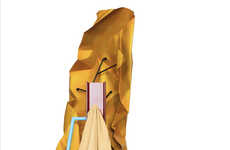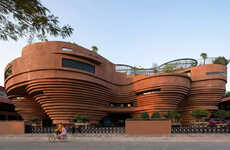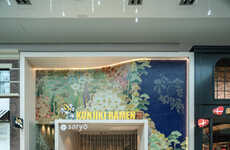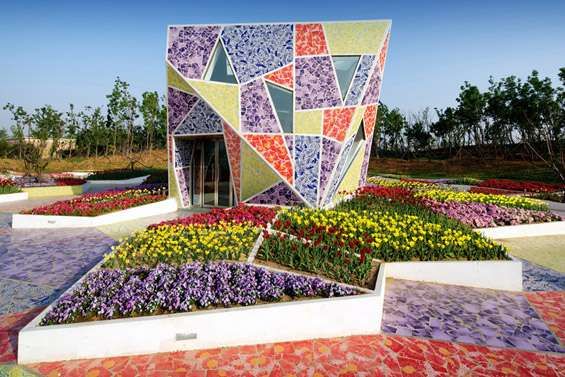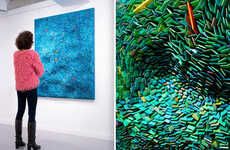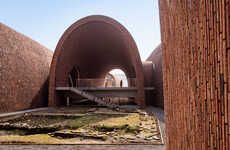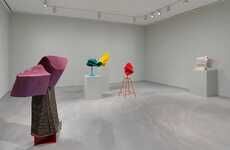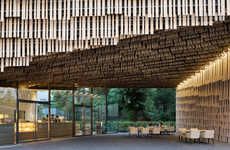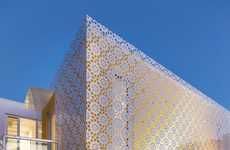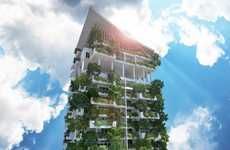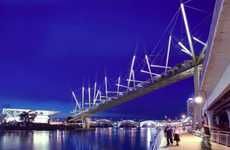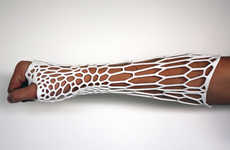
The Mosaic Museum of Ceramics Features a Riot of Broken Bowls
Amelia Roblin — November 27, 2013 — Art & Design
References: casanova-hernandez & archidesignclub
If the Mosaic Museum of Ceramics were a great deal smaller, it would certainly be the jewel of your china cabinet. This architectural project is a chaotic (yet harmonious!) meeting point for several contrasting styles, objects and ideas. Designed by Casanova + Hernandez Architects for the city of Jinzhou, this project certainly serves to enliven an urban park.
The multifaceted structure of the gallery and exhibition space is divided into irregular shapes that have been filled in with brightly colored bits of broken porcelain. Uniting East and West, the tiles form abstract patterns that mimic the vibrant paving of the surrounding landscape and the planting of vivid flower beds. The Mosaic Museum of Ceramics affords an abstract and exciting optical challenge that breaks up the rhythm and the uniformity that you often find in building design.
The multifaceted structure of the gallery and exhibition space is divided into irregular shapes that have been filled in with brightly colored bits of broken porcelain. Uniting East and West, the tiles form abstract patterns that mimic the vibrant paving of the surrounding landscape and the planting of vivid flower beds. The Mosaic Museum of Ceramics affords an abstract and exciting optical challenge that breaks up the rhythm and the uniformity that you often find in building design.
Trend Themes
1. Abstract Architecture - Abstract Tessellated Architecture showcases the use of irregular shapes and abstract patterns to create visually stimulating structures.
2. Multifaceted Design - The Mosaic Museum of Ceramics demonstrates how incorporating multiple elements and contrasting styles in design can create a harmonious and dynamic space.
3. Creative Use of Materials - By using brightly colored bits of broken porcelain, this project illustrates the potential of reimagining materials to create visually striking and unique architectural features.
Industry Implications
1. Architecture - Architects and designers can explore innovative approaches to building design by embracing abstract and unconventional shapes, patterns, and materials.
2. Art and Cultural Institutions - Art and cultural institutions can consider incorporating abstract and visually engaging architectural designs to create memorable and immersive visitor experiences.
3. Urban Planning and Landscaping - Urban planners and landscape designers can draw inspiration from the Mosaic Museum of Ceramics' integration of abstract patterns with the surrounding landscape, creating visually cohesive and stimulating urban environments.
3.4
Score
Popularity
Activity
Freshness


